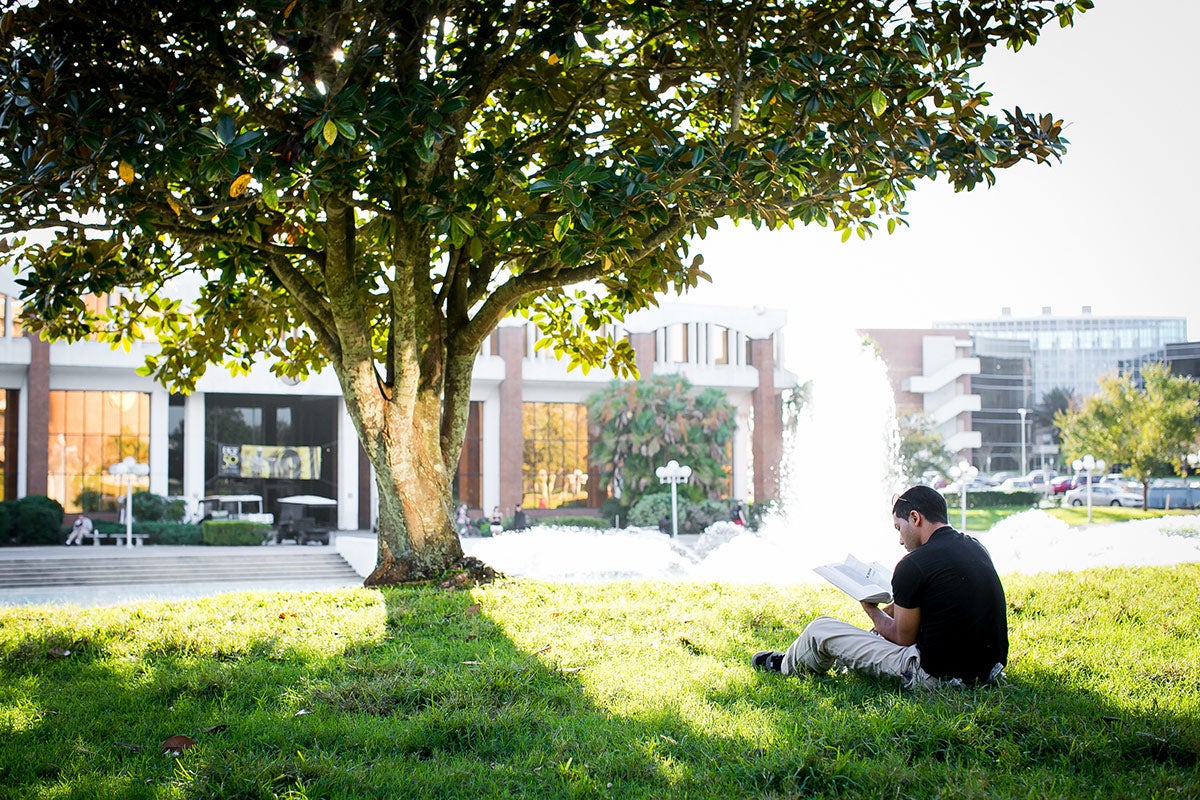The UCF campus will become home to 29 new trees on April 18, in observance of the university’s ninth annual Arbor Day, a holiday that encourages public tree planting and care. Over the past eight years, more than 130 trees have been added to the UCF campus in observance of the day. This year, 20 bald cypress trees will be planted near the Student Union and 9 red maples will also added to the grounds.
The new additions, which will be planted around the Student Union, will help maintain the campus’ canopy value of $4.32 million, which considers environmental impact, monetary value and aesthetic appeal.
In February, the Florida Urban Forestry Council presented UCF with an award for Outstanding Urban Forestry, the first for any university in the state of Florida.
An Award-winning Tree Program
In February, the Florida Urban Forestry Council presented UCF with an award for Outstanding Urban Forestry, the first for any university in the state of Florida.
The award honors the management and care for trees within a city. Within UCF’s Urban Forestry Program, a team of six people, including three certified arborists, spend about 6,000 hours every year installing, removing, air spading, fertilizing and pruning vegetation on campus to help the university maintain its commitment to ecosystem health and preservation.
Through the Department of Landscape and Natural Resources, UCF is working toward a more diverse and appropriate tree canopy, with a dominance of native trees and understory plantings.
“A lot of universities don’t have a landscape program, and many institutions contract the work out,” says John Guziejka, an urban forester and biologist at UCF. “We have a lot of huge trees reaching the peak of their life on campus, and I ride around to see what trees pose a hazard.”
Not only does the team work to prevent accidents, they plant trees to slow storm-water runoff, which allows water to enter the ground more quickly and reduces the chance it picking up paved-surface pollutants.
“We are committed to providing a forestry canopy that provides ecosystem services,” Guziejka says. “Ecosystem services are what the trees can do for us.”
Did You Know?
The trees on the UCF campus improve air quality, provide shade and nutrient filtration, and promote energy conservation. Of the 500 acres of forested conservation land on campus, 82 acres make up the Arboretum.
A sample of 5,320 urban trees at UCF were found to sequester 67 tons of carbon from the atmosphere and put out 161 tons of oxygen each year, according to a recent student study. With the help of students, UCF arborists are working to learn more about the amount of oxygen produced throughout the university’s natural lands.
“Not many universities have 800-plus acres attached to the main campus,”Guziejka says.
In 2011, UCF became one of the first universities in Florida to be recognized as a Tree Campus USA and has maintained the designation every year since. This honor is given to colleges and universities that effectively manage their trees, engage students in forestry-related volunteer efforts and foster healthy urban forests in the community beyond campus.
Another task of the Urban Forestry Program is conducting prescribed fire burns. Burning the forest is crucial to keeping the ecosystems on UCF’s campus healthy, and the campus even safer. Biologists like Guziejka are certified to start fires — another unique aspect to UCF’s program.
“Not many universities have 800-plus acres attached to the main campus,” he says. “The fires promote biodiversity and turn over nutrients into the soil. The university cares about wildfire mitigation and by burning the parcels of land we are helping prevent a catastrophic wildfire.”
Students interested in getting hands-on experience and becoming involved in the Urban Forestry Program can enroll in a biology course called Ecological Field Studies, taught by Jennifer Elliot, a biology instructor who manages the UCF Arboretum.
“In the class, students explore different pockets of biology such as evaluating trees, looking at storm water and managing lands,” says Guziejka, who often works with students in the course. “Students lead real research initiatives and present their findings at conferences. It’s exactly what professionals do and students leave the class really knowing what a job in this field would be like.”
Learn more about UCF’s Urban Forestry Program.






